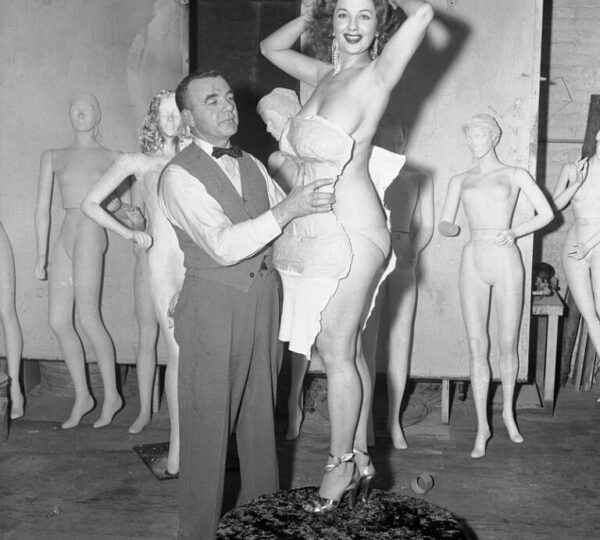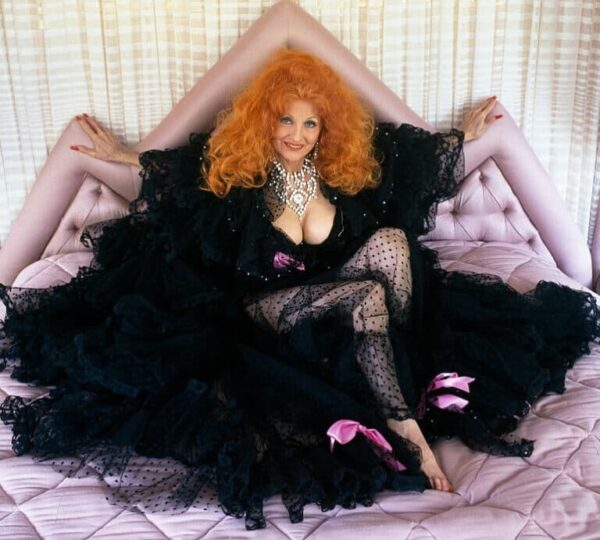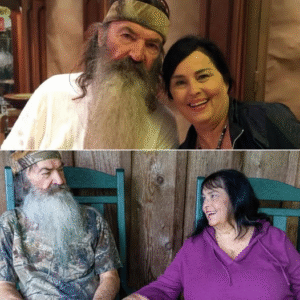With a name like Tempest Storm, it was clear from the beginning that she was destined to leave a mark—and she did, spectacularly. Born Annie Blanche Banks on February 29, 1928, in Eastman, Georgia, she entered a world marked by hardship, poverty, and a turbulent family life. Her early years were shadowed by abuse and limited opportunity, circumstances that would instill in her both resilience and a hunger for independence. By the age of fourteen, she was determined to escape the confines of her small town, embarking on a life of adventure, self-discovery, and relentless ambition.
Her first attempts at independence involved hasty teenage marriages—one to a Marine, annulled the following day, and another to a shoe salesman, which failed as her restless spirit refused to be contained. Annie Blanche was not content with ordinary life; she yearned for the bright lights and limitless possibilities of Hollywood, a world that promised glamour, recognition, and transformation.
Arriving in Los Angeles in the 1940s, she found both opportunity and reinvention. A casting agent offered her two names—Sunny Day or Tempest Storm. She chose the latter, embracing the idea of lightning over sunshine, a foreshadowing of the electrifying presence she would bring to every stage she graced. Initially working as a cocktail waitress, she discovered striptease by accident after a customer inquired whether she performed it. Though she had no prior experience, she quickly realized she possessed a rare talent: the ability to captivate an audience with a single glance, a subtle gesture, or a measured turn.

By the late 1940s, Tempest Storm was performing professionally, and by the mid-1950s, she had become one of the most prominent headliners in the burlesque world. Her performances were distinguished by elegance and artistry rather than sheer sensuality. She perfected the art of tease, using rhythm, movement, and costume to enchant and hypnotize. Rhinestones, flowing gowns, and intricate choreography became her trademarks, and she commanded her audience with the same precision that other performers reserved for musical notes or dramatic timing.
Her fame was extraordinary. Lloyd’s of London insured her famous curves for an astounding million dollars, reflecting both her commercial value and cultural impact. At the height of her career, she earned roughly $100,000 a year—a fortune equivalent to about a million in today’s dollars. The media was fascinated by her, dubbing her “Tempest in a D-Cup,” and she shared stages with legendary performers such as Blaze Starr and Lili St. Cyr. Her film appearances, including Teaserama (1955) and Buxom Beautease (1956), often paired her with icons like Bettie Page, further cementing her reputation.

Beyond the glitter and sequins, Tempest Storm lived with remarkable discipline and self-awareness. She abstained from smoking, avoided alcohol stronger than 7-Up, followed strict routines of granola breakfasts, and maintained daily sauna and massage rituals. She refused plastic surgery, proudly asserting that her natural beauty was enough. This discipline enabled her to sustain a long career in an industry known for its fleeting stars and relentless pressures.
Her personal life was as dramatic as her performances. She captivated Hollywood, dating figures such as Elvis Presley, Mickey Rooney, and even mobster Mickey Cohen. In 1959, she married jazz singer Herb Jeffries, Hollywood’s first Black singing cowboy. Together, they had a daughter, Patricia Ann, and their interracial marriage broke social barriers at a time when such unions were still widely taboo in the United States. While their union cost her work in certain states where interracial marriage remained illegal, Tempest Storm never expressed regret, believing that love and personal authenticity were worth any sacrifice.
Tempest’s impact extended beyond the stage. She became a muse for future generations of performers, including Dita Von Teese, who credits Storm with inspiring a revival of burlesque and glamour in contemporary culture. Despite the changing tides of entertainment, Tempest refused to fade. She continued performing into her sixties and even returned to the stage in her eighties, demonstrating that allure, talent, and artistry do not expire with age.
In 1999, San Francisco honored her with “Tempest Storm Day” when she headlined the O’Farrell Theatre’s 30th anniversary. She remained an active presence at Burlesque Hall of Fame events through the 2000s. In 2016, the documentary Tempest Storm offered an intimate portrait of her life, revealing not just the performer but the woman who navigated fame, love, and societal expectations with courage and dignity.
Even in her later years, living in Las Vegas, Tempest Storm’s aura remained palpable. She passed away in 2021 at the age of ninety-three, leaving behind a legacy far greater than sequins, stage lights, or fame. She embodied the idea that sensuality could be art, confidence could be an act of defiance, and glamour could serve as both shield and statement.
Tempest Storm’s life is a testament to reinvention, resilience, and unyielding individuality. From a troubled small-town childhood to the heights of international burlesque stardom, she demonstrated that one’s past does not define the future. Modern audiences continue to celebrate her, not only for her iconic performances but for her ability to reshape cultural norms, challenge societal boundaries, and inspire generations of women to embrace both power and sensuality. Unstoppable, unforgettable, and true to her name, Tempest Storm remained a force of nature, leaving an indelible mark on the world of entertainment and beyond.
With a name like Tempest Storm, it was clear from the beginning that she was destined to leave a mark—and she did, spectacularly. Born Annie Blanche Banks on February 29, 1928, in Eastman, Georgia, she entered a world marked by hardship, poverty, and a turbulent family life. Her early years were shadowed by abuse and limited opportunity, circumstances that would instill in her both resilience and a hunger for independence. By the age of fourteen, she was determined to escape the confines of her small town, embarking on a life of adventure, self-discovery, and relentless ambition.
Her first attempts at independence involved hasty teenage marriages—one to a Marine, annulled the following day, and another to a shoe salesman, which failed as her restless spirit refused to be contained. Annie Blanche was not content with ordinary life; she yearned for the bright lights and limitless possibilities of Hollywood, a world that promised glamour, recognition, and transformation.
Arriving in Los Angeles in the 1940s, she found both opportunity and reinvention. A casting agent offered her two names—Sunny Day or Tempest Storm. She chose the latter, embracing the idea of lightning over sunshine, a foreshadowing of the electrifying presence she would bring to every stage she graced. Initially working as a cocktail waitress, she discovered striptease by accident after a customer inquired whether she performed it. Though she had no prior experience, she quickly realized she possessed a rare talent: the ability to captivate an audience with a single glance, a subtle gesture, or a measured turn.

By the late 1940s, Tempest Storm was performing professionally, and by the mid-1950s, she had become one of the most prominent headliners in the burlesque world. Her performances were distinguished by elegance and artistry rather than sheer sensuality. She perfected the art of tease, using rhythm, movement, and costume to enchant and hypnotize. Rhinestones, flowing gowns, and intricate choreography became her trademarks, and she commanded her audience with the same precision that other performers reserved for musical notes or dramatic timing.
Her fame was extraordinary. Lloyd’s of London insured her famous curves for an astounding million dollars, reflecting both her commercial value and cultural impact. At the height of her career, she earned roughly $100,000 a year—a fortune equivalent to about a million in today’s dollars. The media was fascinated by her, dubbing her “Tempest in a D-Cup,” and she shared stages with legendary performers such as Blaze Starr and Lili St. Cyr. Her film appearances, including Teaserama (1955) and Buxom Beautease (1956), often paired her with icons like Bettie Page, further cementing her reputation.

Beyond the glitter and sequins, Tempest Storm lived with remarkable discipline and self-awareness. She abstained from smoking, avoided alcohol stronger than 7-Up, followed strict routines of granola breakfasts, and maintained daily sauna and massage rituals. She refused plastic surgery, proudly asserting that her natural beauty was enough. This discipline enabled her to sustain a long career in an industry known for its fleeting stars and relentless pressures.
Her personal life was as dramatic as her performances. She captivated Hollywood, dating figures such as Elvis Presley, Mickey Rooney, and even mobster Mickey Cohen. In 1959, she married jazz singer Herb Jeffries, Hollywood’s first Black singing cowboy. Together, they had a daughter, Patricia Ann, and their interracial marriage broke social barriers at a time when such unions were still widely taboo in the United States. While their union cost her work in certain states where interracial marriage remained illegal, Tempest Storm never expressed regret, believing that love and personal authenticity were worth any sacrifice.
Tempest’s impact extended beyond the stage. She became a muse for future generations of performers, including Dita Von Teese, who credits Storm with inspiring a revival of burlesque and glamour in contemporary culture. Despite the changing tides of entertainment, Tempest refused to fade. She continued performing into her sixties and even returned to the stage in her eighties, demonstrating that allure, talent, and artistry do not expire with age.
In 1999, San Francisco honored her with “Tempest Storm Day” when she headlined the O’Farrell Theatre’s 30th anniversary. She remained an active presence at Burlesque Hall of Fame events through the 2000s. In 2016, the documentary Tempest Storm offered an intimate portrait of her life, revealing not just the performer but the woman who navigated fame, love, and societal expectations with courage and dignity.
Even in her later years, living in Las Vegas, Tempest Storm’s aura remained palpable. She passed away in 2021 at the age of ninety-three, leaving behind a legacy far greater than sequins, stage lights, or fame. She embodied the idea that sensuality could be art, confidence could be an act of defiance, and glamour could serve as both shield and statement.
Tempest Storm’s life is a testament to reinvention, resilience, and unyielding individuality. From a troubled small-town childhood to the heights of international burlesque stardom, she demonstrated that one’s past does not define the future. Modern audiences continue to celebrate her, not only for her iconic performances but for her ability to reshape cultural norms, challenge societal boundaries, and inspire generations of women to embrace both power and sensuality. Unstoppable, unforgettable, and true to her name, Tempest Storm remained a force of nature, leaving an indelible mark on the world of entertainment and beyond.





